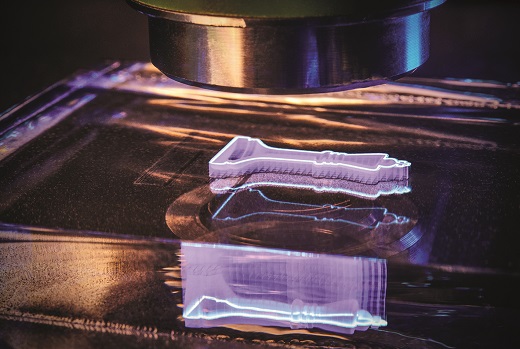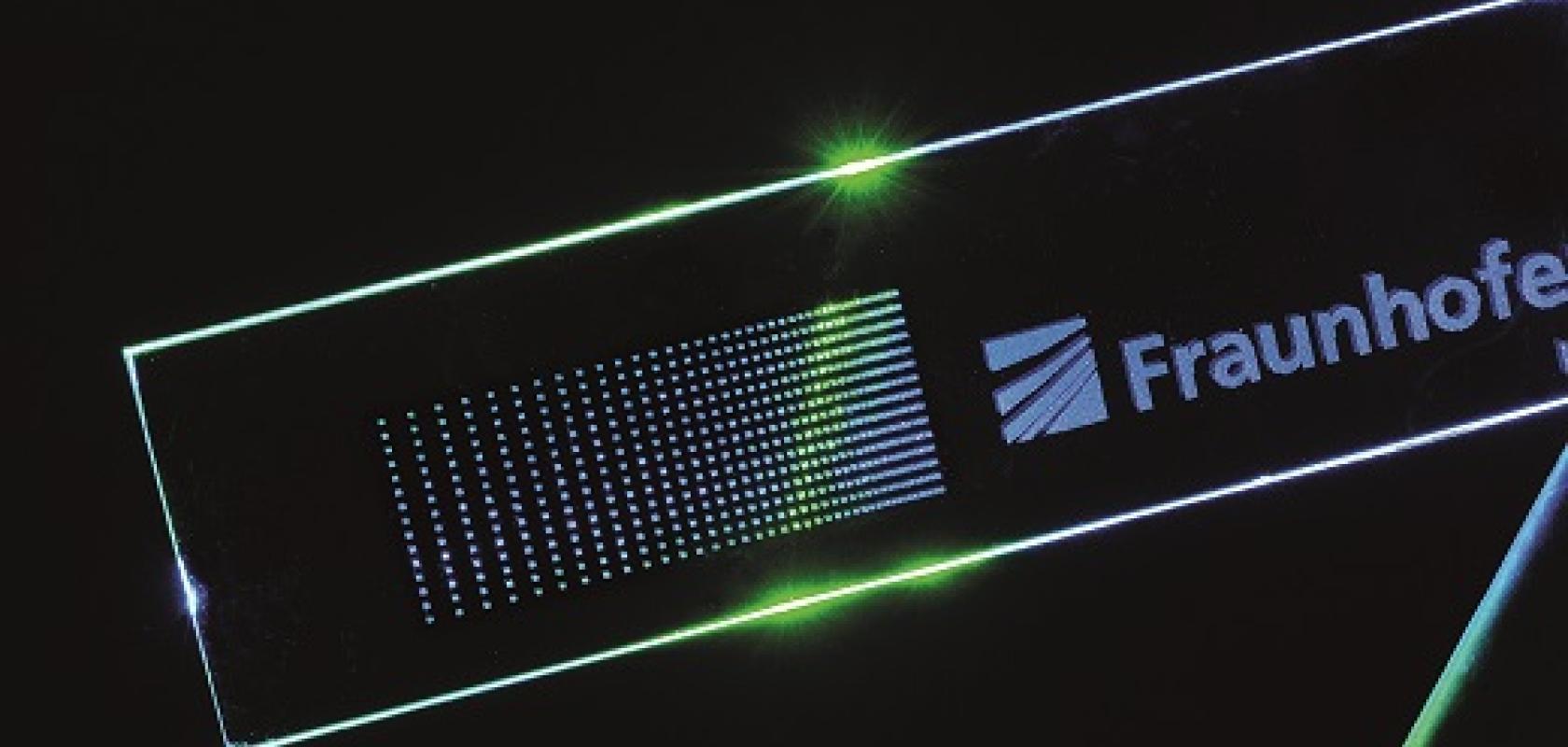Partners of a German research project are exploring how the beams of ultrashort pulse lasers can be shaped using refractive and diffractive optical elements, specifically for the processing of glass in head-up displays for the automotive industry.
Specially shaped ultrashort pulse (USP) laser beams can be used to structure glass surfaces, introduce stresses into glass volumes, or change the refractive index of glass locally.
Under the ‘Femto DPP’ project, the Fraunhofer Institute for Laser Technology ILT, together with the Chair for Laser Technology LLT at RWTH Aachen University and partners from industry – including Trumpf and 4Jet Technologies – are developing a technology that uses refractive and diffractive optical elements (ROEs and DOEs) to adapt optimally the laser beams of USP lasers for producing micrometre-sized defects in glass. These defects reflect incoming LED light at a certain angle – a property required in the function of head-up displays.
The research is being done within the framework of the Digital Photonic Production DPP research campus in Aachen – a funding initiative of the German Federal Ministry of Education and Research (BMBF).
Modern DOEs can shape light precisely into almost any desired shape thanks to their diffraction structure. Thus, special beam profiles or complex patterns can be generated from a single beam –Fraunhofer ILT scientists have succeeded in developing DOEs that form an array of up to 196 similar beams from one powerful USP laser beam. These can be used to increase the productivity of USP lasers in applications, such as producing functionalised surfaces on large structures, as was highlighted at the biennial International Laser Technology Congress, AKL, held in Aachen last year.
As pure glass optics with a high thermal stability, DOEs can be used with over 100W USP lasers, while ROEs can be used to refract beams at powers in the multi-100W range.

Laser beams are optimised by beam shaping for in-volume structuring of glass to manufacture 3D parts. (Image Fraunhofer ILT)
Another application of USP laser beams being explored by the research partners is the separation of glass in any desired shape, and without generating dust or a need to rework the edges.
Ultrashort laser pulses can be used to modify glass, allowing it and be broken along virtually any contour without releasing residues. This is done by generating predetermined breaking points, which are introduced in a controlled manner by, rather than scratching the surface of the glass, instead generating small mechanical stresses inside the material volume, which result in a clean edge when the material is separated. To do this however, a special intensity distribution is needed in the laser beam, with a long beam waist and a steeply sloping intensity profile – which is where the DOEs and ROEs being produced under the Femto DPP project come in.
According to Fraunhofer ILT, it was the production of smartphone displays in particular that raised the question of how round shapes in tempered glass can be separated both quickly and easily, and this has since spurred the development of technology for USP lasers.
Details of Fraunhofer ILT’s progress within the Femto DPP project will be presented at the ILT’s ‘5th UKP-Workshop: Ultrafast Laser Technology’ on 10 and 11 April 2019 in Aachen.


